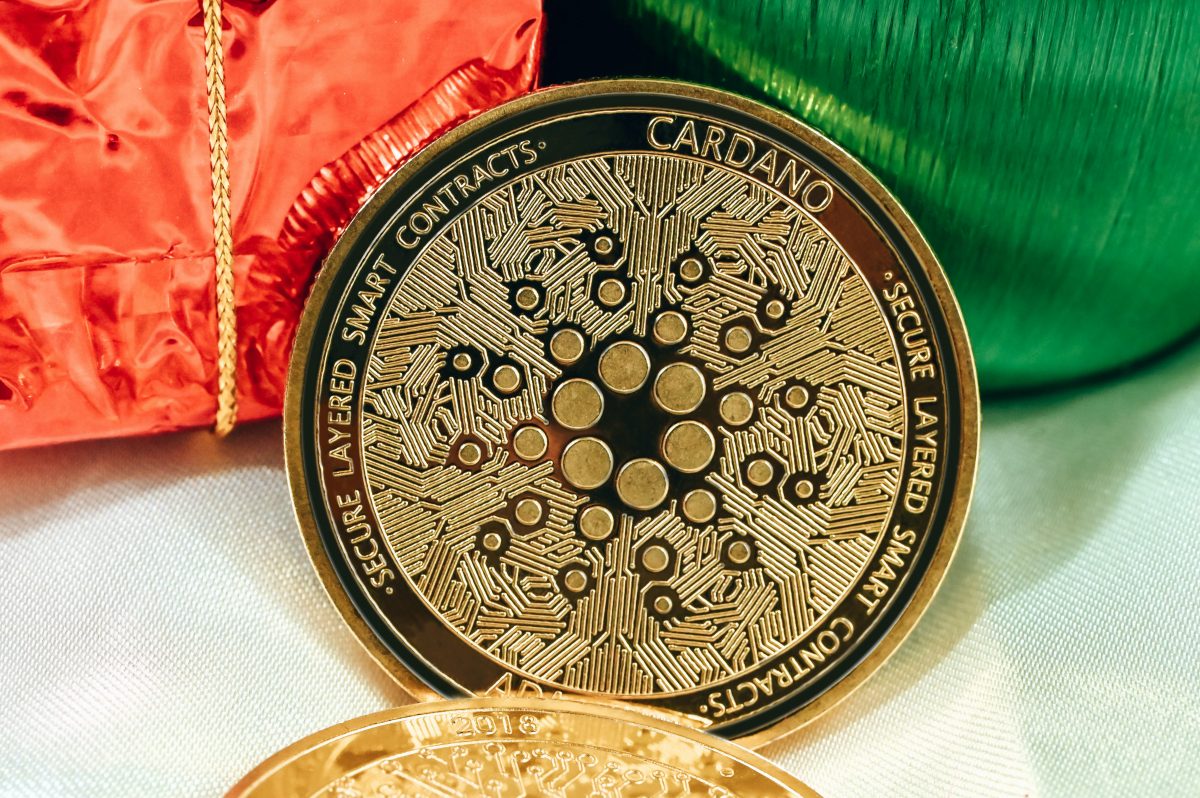Branded as the solution to Bitcoin’s lack of programmability and Ethereum’s transaction speed bottleneck, Cardano has had a lot of media coverage since its launch in 2017.
In contrast, Cardano’s development has been slow, and it only launched smart contracts at the end of 2021, and still, it did not have the Ethereum killer performance many had hoped for. The best crypto casino has already developed crypto gambling games deployed with Ethereum.
But, Cardano has always stated that its ecosystem would be peer-reviewed and well-tested. Implementing changes takes a long time, but they say it will be worth it. In the meantime, you might be wondering: can you mine Cardano? This article will attempt to answer that question and give more background on Cardano and its purpose in the blockchain sector.
What Makes Cardano and ADA Important?
Can you mine Cardano? That is a valid question, but another important question is: Why is Cardano important? Will it have value in the future? Without utility, a cryptocurrency will likely drop in value long-term. Meme coins, for example, do not have any use cases outside their popularity with traders and community members. As a short-term investment, it could double or triple profits. But Cardano is a long-term project. Since the beginning, it has emphasised choosing sound research over jumping on the hype train. Furthermore, Cardano has already entered many sectors with partnerships that show its use cases in the real world.
Firstly, Atala PRISM leverages the Cardano network to provide university students with an immutable certification and ID system. This means that students can own their academic certificates without asking the university for verified proof of qualification. Students receive a digital certificate which they can send to potential employers. Employers can verify these certificates without needing to contact another party. The system also provides comprehensive student IDs to streamline identification processes.
Atala SCAN provides tools to companies that allow them to make their products auditable and certified. Companies only have to include a certain key to their products, and the blockchain can determine if it is original or fake. Moreover, Atala SCAN uses the Cardano network to ensure that counterfeiters cannot create and distribute fake items in the retail sector.
Lastly, Cardano has begun implementing solutions for the agriculture and financial sector using Atala PRISM, Atala SCAN, and Atala TRACE.
Can You Mine Cardano?
Cardano’s consensus protocol, Ouroboros, is Proof-of-Stake. This is in contrast with blockchains that use the Proof-of-Work protocol.
Proof of Stake vs Proof of Work
To answer, can you mine Cardano? We must look at the differences between Proof-of-Work (PoW) and Proof-of-Stake.
Firstly, PoW needs miners to race to solve a complex mathematical problem to add a block to the network. This requires specialised mining hardware like an ASIC running for long periods.
Accordingly, since miners need to solve the problem first to receive any reward, many tend to operate more than one mining rig. Others started companies that exclusively mined cryptocurrencies. These mining farms expended lots of energy, and bitcoin mining activities have notoriously used amounts of energy equal to small countries. Many countries, most notably China, have banned these mining farms due to their environmental impact and lack of tax controls.
Lastly, mining activities on the Bitcoin network have become increasingly difficult. The network increases mining difficulty as more coins become available through mining. The network also reduces mining rewards every four years. This makes mining more complex and less profitable as these operations continue.
The PoS Solution
Enter Cardano and its Proof-of-Stake blockchain. This consensus protocol does not race miners looking to earn rewards. Instead, users must buy the blockchain’s native token and stake it in the protocol to become validators. The protocol randomly chooses a validator to add a block based on their stake in the network.
Furthermore, the network adds the staked funds to various staking pools, where it chooses a slot leader after each block production. If a slot leader successfully adds a block, the entire staking pool receives a reward in the staked cryptocurrency. In this case, ADA. Users can either join an already established staking pool or delegate their stake. In turn, the user receives rewards proportionate to their stake. They could also start their staking pool and attract delegators. Can you mine Cardano using PoS? No.
Finally, the PoS consensus protocol does not require specialised hardware. It is energy efficient and scales to accommodate more users without creating a bottleneck based on available computational power.
Wallets
Wallets are essential to blockchain processes because they allow users to connect to the network and perform various activities. These include receiving mining rewards, staking their crypto, and exchanging currencies. To participate in Cardano staking pools, you must create a compatible wallet. It allows you to connect to various staking pools and my Cardano on a third-party platform. That might beg the question: Can you mine Cardano? No, not directly, at least.
Daedalus
Cardano has several wallets that interact with its ecosystem. Daedalus, a first-party wallet, allows you to run a full Cardano node. This allows you to validate transactions against all the chain’s previous data. It also means that you can begin a staking pool with this wallet. It does not need to connect directly to the internet when validating transactions. This makes it safer than web wallets or light wallets that only send packets to a full node. But, a full node requires hard disk space, and its updates to include newer transactions might take a while to sync.
The good thing with Daedalus is that it allows multiple wallet creation, meaning you can store your funds differently depending on your uses for the Cardano network. It also includes various backup and restoration security measures. Lastly, the wallet can run on Linux, Windows, and macOS. You can also customise the wallet’s theme for a level of personalisation.
Yoroi
Yoroi is the second wallet you can use for Cardano staking. Unlike Daedalus, it is not a full-node wallet. Instead, it is a light wallet that quickly connects to the blockchain. It is a much quicker setup than Daedalus but less secure.
However, the developers have added another layer of security to the wallet. This is so that all private keys are encrypted at each end, server and client side. This means that even if someone does intercept a private key, they cannot read it without the specific encryption key. Yoroi has a simple design that allows you to quickly stake Cardano and keep an eye on balances and transactions.
Can you mine Cardano with only these wallets? No, but it is the first step to finding a way to mine.
How Do You Mine Cardano?
Can you mine Cardano? Yes, through a third-party application. unMineable is a software that allows users to mine other crypto but is rewarded with unminable cryptos, like ADA. It requires a few more steps than Cardano staking. It is not recommended for users looking to earn ADA rewards.
This carries some risk because it is not an officially Cardano-endorsed application. But you can try it if you understand the risks.
1. First, download the mining app from unmineable.com
2. Run the zip file, and a hardware screen will appear: Choose GPU or CPU.
3. Next, you need to download a miner application from unmineable. Choose Phoenix or XMRIG.
4. Next, choose the location of the miner file on the hardware screen.
5. Finally, follow the prompts to begin mining ADA.
Note that unminable can work well with its staking pools. This means that the amount of ADA you can mine depends on their staking pool.
What Is Cardano, Exactly?
The Cardano blockchain project looks to improve Bitcoin’s security and Ethereum’s developer tools (smart contracts). It seeks to become the most reliable, secure, and thoroughly tested public blockchain. It envisions a future where every industry uses Cardano because it has done verifiable research and rigorous tests and is a trusted technology.
The blockchain does not use the Proof-of-Work consensus algorithm. This makes it more environmentally friendly than Bitcoin and Ethereum. It uses Proof-of-Stake (PoS), which leads to quicker block settlement times and a more equitable rewards system. Can you mine Cardano? The short answer is no. PoS protocols do not need to mine crypto. They only require users to stake their tokens. Accordingly, its PoS consensus protocol Ouroborous, allows developers to leverage peer-reviewed technologies and provide services on a global scale.
But, Cardano’s feature rollout is slower than other blockchain projects. Its in-depth research and testing of new features can take years. This makes certain users impatient and fearful that the platform will not adapt quickly enough to the ever-changing blockchain industry. Despite that, Cardano has already launched agriculture, finance, education, and retail projects. Its fast settlement time and consistent performance make it ideal for enterprises.
In addition, Cardano has a native token, ADA. Named after Ada Lovelace, the first computer engineer, it is the utility and governance token for the network. It has recently launched a governance protocol that allows ADA holders to stake their crypto to vote and create proposals for changes on the network.
Cardano’s Vision
There is lots of confusion around Cardano’s approach to development and improvement. The project does not respond to trends and sticks to certain principles defined at the beginning of the process. It has not even attempted to entertain questions like: Can you mine Cardano?
Moreover, this comes from its commitment to creating a stable network that enhances public sectors that require reliable and tested technologies. Cardano has five guiding principles. These include Adoption, Legalisation & Commercial Standards, Community, Stakeholder Accountability, and Partnerships.
Adoption
The project’s first principle emphasises its commitment to driving adoption from various public sectors worldwide. This extends to creating real-world use cases for education, healthcare, and public service delivery. It falls to the IOHK and EMURGO companies.
Legislation and Commercial Standards
The second principle looks to drive the adoption of new standards for blockchain technologies across various industries. This includes promoting advances in legacy systems and showing how the blockchain can improve and collaborate with these established processes. The Cardano Foundation supports legislation for the definition of cryptocurrencies at regulatory bodies and publishes peer-reviewed research on the benefits of adopting blockchain technologies for future generations.
Community
The third principle focuses on Cardano’s governance structure and how it needs to develop decentralised processes like on-chain proposals and voting. It allows ADA holders to participate in the decision process regarding new features and platform improvements. The project has already begun implementing this with Cardano Catalyst.
Stakeholder Accountability
The fourth principle entails holding all Cardano stakeholders responsible for their actions or misdeeds. This includes having clear communication channels between the community, IOHK, Cardano Foundation, and EMURGO. They strive towards creating a standard reporting process for revenue, project, and technical developments. This happens with all stakeholders need to abide by regulatory and legal standards. Cardano has various channels where the public and stakeholders can receive regular updates on the Cardano ecosystem.
Partnerships
The final principle combines all the ideals of transparency, adoption, and standards creation. The Cardano project seeks partnerships that will create open-source applications using smart contracts to increase interoperability across blockchains and enhance Cardano’s reach in the industry.
Final Thoughts
Cardano is a public blockchain meant to provide stability and reliability to the sector. It envisions a future where a blockchain is fast and secure and sets the standard for all systems across the globe. It has already launched applications for sectors, and it has implemented the tools developers need to begin building an ecosystem. But, progress is slow.
Can you mine Cardano? No. But it is possible to mine other cryptocurrencies and receive rewards in ADA. However, you can join a Cardano staking pool to receive rewards from Cardano’s PoS protocol.

















